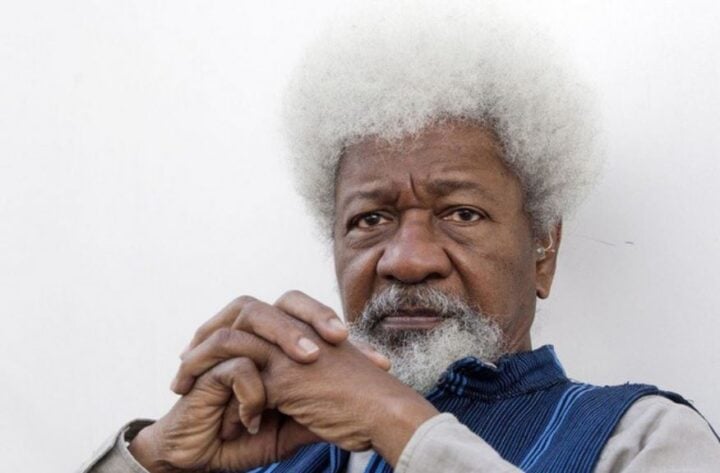Space exploration is dynamic and developments have been ongoing over the years with several countries actively engaged in space exploration; and have demonstrated interest in the long-term goal of space colonization. Three prominent countries at the fore of space exploration and showing interest in colonization include the United States, China, and Russia.
The United States, NASA (National Aeronautics and Space Administration), has played a lead role in space exploration since when it was established in 1958. They have a rich history of crewed space missions, which included the Apollo moon landings. In recent years, NASA has paid more attention to projects some of which are:
- Artemis Program: This program focuses on returning humans to the Moon and putting in place a sustainable human presence there by the mid-2020s. The program includes crewed lunar missions with the Artemis missions. It will land the first woman and the next man on the lunar surface. The Lunar Gateway, which is a space station in orbit around the Moon, is planned as part of Artemis to be a staging point for crewed missions to the lunar surface.
- Mars Exploration: NASA continues to give attention to Mars exploration with robotic missions. The Perseverance rover, part of the Mars 2020 mission, landed on Mars in February 2021. Its goal is to search for signs of past life and collect samples for possible return to Earth. The Ingenuity helicopter, which accompanied Perseverance, showed powered, controlled flight on Mars.
- James Webb Space Telescope (JWST): This is a highly anticipated space telescope that will launch in the future. It is designed to be the successor to the Hubble Space Telescope. It provides unrivaled capabilities to observe distant objects in the universe. This includes the study of exoplanets and the early universe.
- International Space Station (ISS): NASA is committed to promoting human space exploration and driving collaboration. They continue to collaborate with international partners on scientific research and technological experiments in the unique microgravity environment. Also, commercial partnerships have become increasingly important, with private companies conducting resupply missions and crewed flights to the ISS.
- Commercial Crew Program: NASA’s Commercial Crew Program involves working together with private companies to transport astronauts to and from the ISS. SpaceX’s Crew Dragon and Boeing’s CST-100 Starliner are major components of this program.
- Europa Clipper Mission: This is focused on studying Jupiter’s moon Europa, and is believed to have a subsurface ocean. The mission seeks to assess the moon’s potential habitability by examining its surface and subsurface characteristics.
These are just a few, and NASA is working on various other scientific missions, technological advancements, and international collaborations. For the latest updates and detailed information, it’s recommended to visit NASA’s official website and follow their press releases and mission updates.
Private Companies: SpaceX, or Space Exploration Technologies Corp., founded by Elon Musk in 2002, is a private aerospace manufacturer and space transportation company. They have been driving interesting activity in various space exploration initiatives. This is aimed at revolutionizing space travel and making it more accessible. Some space exploration activities and projects that SpaceX has been working on include:
Advertisement
- Falcon and Starship Rockets: SpaceX created the Falcon family of rockets, including the Falcon 1, Falcon 9, and Falcon Heavy. Falcon 9, specifically, has become a ready go-to for satellite launches, cargo resupply missions to the International Space Station (ISS), and crewed missions. Also, the Starship spacecraft is planned to be a fully reusable spacecraft. It should be able to carry both crew and cargo on a variety of missions, which includes crewed interplanetary travel (now gets even more interesting). This is planned to be a major component of SpaceX’s long-term vision for Mars colonization.
- Dragon Spacecraft: SpaceX has come up with Cargo Dragon and Crew Dragon variants, which have been instrumental in resupplying the ISS and transporting astronauts to and from the space station. Crew Dragon is geared to transport astronauts safely to space and back, and reduce dependence on other nations’ spacecraft.
- Commercial Crew Program: This spacecraft is part of NASA’s Commercial Crew Program. It focuses on facilitating commercial partnerships for transporting astronauts to the ISS. SpaceX’s Crew Dragon was the first commercial spacecraft to take astronauts to the ISS with the successful Demo-2 mission in 2020.
- Starlink Satellite Constellation: SpaceX has been putting forward the Starlink satellite constellation, a mega constellation created to offer global broadband internet coverage. The revenue generated from Starlink is tailored toward funding SpaceX’s ambitious space exploration goals.
- Mars Colonization (Starship to Mars): Elon Musk envisions using the Starship spacecraft for crewed missions to Mars, with the long-term target of establishing a human settlement on the Red Planet. SpaceX looks at Mars colonization as a step in the direction of making humanity multi-planetary and making sure species survive.
- Space Tourism: SpaceX has gone into the space tourism industry, and plans to provide commercial spaceflights for private individuals. The Inspiration4 mission in 2021, which included the first all-civilian crew, served as a significant milestone in commercial space tourism. It is noteworthy to mention that developments in the space industry are dynamic, as SpaceX continues to work on new projects.
Another country doing some work is China. China National Space Administration (CNSA) has been actively working on space exploration with some achievements under its belt. It is noteworthy to mention that the space industry is evolving rapidly. Here are some major areas of China’s space exploration efforts:
- Chang’e Lunar Exploration Program: This program, named after the Chinese moon goddess, is a series of lunar exploration missions. China has successfully launched several Chang’e missions. This includes orbiters, landers, and rovers, to study the Moon’s surface and geology. Notably, the Chang’e-4 mission made the first-ever soft landing on the far side of the Moon in January 2019, releasing the Yutu-2 rover to explore the lunar surface.
- Tiangong Space Station: This is a modular space station that focuses on serving as a laboratory for scientific research and experiments. The construction of the space station involves launching multiple modules and assembling them in orbit. The Tiangong space station is part of China’s efforts to establish a long-term human presence in space.
- Mars Exploration: China has moved into Mars exploration with the Tianwen-1 mission. Launched in July 2020, Tianwen-1 included an orbiter, lander, and rover. The rover, named Zhurong, successfully landed on Mars in May 2021, marking China’s first Mars surface mission. Zhurong’s mission includes studying the Martian surface, atmosphere, and geology.
- Human Spaceflight: China has implemented crewed spaceflights through the Shenzhou program. Notably, the Shenzhou-12 mission in 2021 transported astronauts to the Tiangong space station for an extended stay. China has demonstrated long-term goals for crewed missions to the Moon and Mars.
- Satellite Launches and Commercial Space Activities: China has a robust satellite launch program, offering commercial satellite launch services for domestic and international clients. Chinese private space companies have been contributing to the growing commercial space sector in China. As the CNSA continues to advance its space capabilities, new missions and initiatives will likely be announced in the future.
Furthermore, the Russian Roscosmos has a long history in space exploration, with a rich history of achievements dating back to the era of the Soviet Union. Here are some major areas of Roscosmos’s space exploration efforts:
- International Space Station (ISS) Participation: Russia has been a major partner in the ISS program, contributing modules to the space station and taking part in various scientific experiments and activities. Russian Soyuz and Progress spacecraft have been used for crewed and cargo missions to the ISS.
- Lunar Exploration: Russia has shown interest in lunar exploration, with plans for both crewed and robotic missions to the Moon. These missions are part of Russia’s broader goals in space exploration, including the study of the Moon’s surface and potential resource utilization.
- Mars Exploration: Russia has a history of Mars exploration, with previous missions such as the Mars program in the Soviet era. In recent years, there have been discussions about future Mars missions, which include the possibility of joint missions with European partners.
- Soyuz and Progress Spacecraft: This has been a workhorse for Russian crewed spaceflights, moving astronauts to and from space stations. The Progress spacecraft is used for cargo resupply missions to the ISS.
- Angara Rocket Family: Roscosmos has been working on the Angara Rocket family, which includes various configurations for launching payloads into space. The Angara rockets are intended to replace older rocket designs and enhance Russia’s launch capabilities.
- Lunar Gateway and Deep Space Exploration: Russia has demonstrated interest in taking part in the Lunar Gateway program. This is a planned space station in lunar orbit that will work as a staging point for crewed missions to the Moon and beyond.
- International Collaboration: Roscosmos continues to work with international space agencies on different projects, encouraging cooperation in space exploration and scientific research. As space exploration progresses globally, Russia is likely to play a role in future missions and collaborations.
Besides, several African countries have shown an increasing interest in space exploration and have taken steps to develop their space capabilities. It is important to say that Africa’s involvement in space activities varies among its countries. Here are some major aspects of space exploration in Africa:
Advertisement
- South Africa: They have been a leader in space activities on the continent. The South African National Space Agency (SANSA) plays a central role in coordinating and advancing the country’s space endeavors. South Africa has launched several satellites, including the ZACube-2 Earth observation satellite. SANSA serves in various space-related research and development projects.
- Nigeria: has made some strides in space exploration. The National Space Research and Development Agency (NASRDA) has launched multiple satellites like NigeriaSat-1 and NigeriaSat-2, for applications in agriculture, disaster monitoring, and communication. Nigeria is actively working on international collaborations and partnerships related to space research.
- Egypt: has shown interest in space exploration and has established the National Authority for Remote Sensing and Space Sciences (NARSS) to supervise space activities. Egypt has launched Earth observation satellites like EgyptSat-1 and EgyptSat-A, for applications in agriculture, urban planning, and environmental monitoring.
- Algeria: has developed its space capabilities through the Algerian Space Agency (ASAL) and has launched Earth observation satellites, including AlSat-1 and AlSat-2, for applications in agriculture, forestry, and disaster monitoring.
- Morocco: has entered the space sector with the Mohammed VI-A and Mohammed VI-B Earth observation satellites. These satellites contribute to applications in agriculture, land use, and environmental monitoring.
- Kenya: has demonstrated interest in space activities and has established the Kenya Space Agency (KSA) to coordinate its space program. The country aims to launch its first satellite in the future.
- African Union (AU) and Regional Initiatives: has recognized the importance of space science and technology for the continent’s development. The African Space Policy and Strategy, adopted by the AU, puts together a framework for promoting space activities across Africa. Regional initiatives, such as the African Resource Management Constellation (ARMC), involve collaboration among African countries for Earth observation and natural resource management.
While these examples demonstrate the progress made by some African countries in space exploration, it is important to recognize that the level of involvement varies across the continent, and yes more work can be done through private organization’s active involvement. Collaboration and the sharing of resources and expertise have been major conversations in promoting Africa’s presence in space exploration. Continued efforts and investments are likely to shape Africa’s role in future space activities.
In conclusion, while space exploration has led to numerous benefits and advancements, some challenges need to be addressed, including cost, environmental impact, and ethical considerations. Continued international collaboration and responsible exploration practices are crucial for ensuring the sustainable development of space activities.
Thank you for the investment in time, and I am open to conversations on furthering these thoughts. To be notified each time I publish a new post, follow my Medium: https://medium.com/@roariyo and LinkedIn: https://www.linkedin.com/in/olufemi-ariyo-923ba6130/ or send an email to [email protected]
Advertisement
Add a comment






